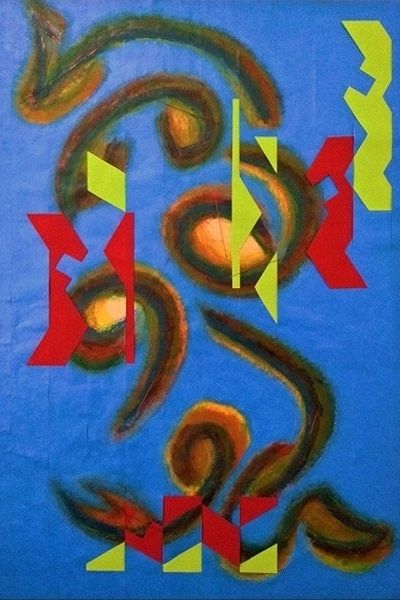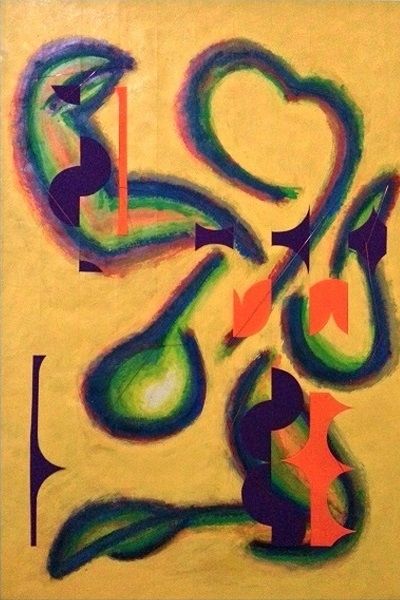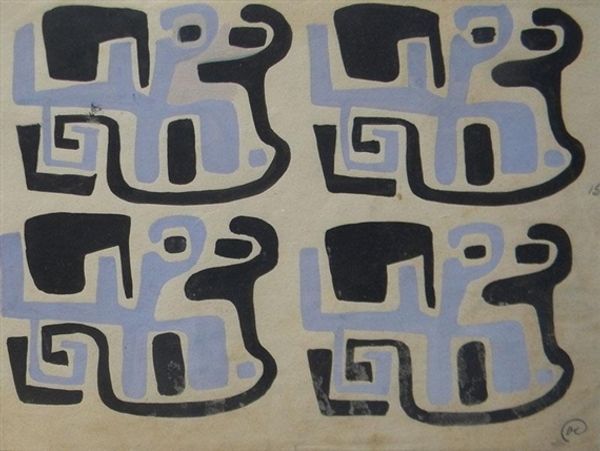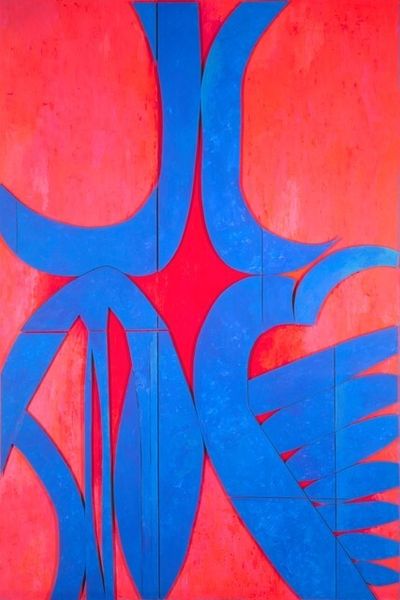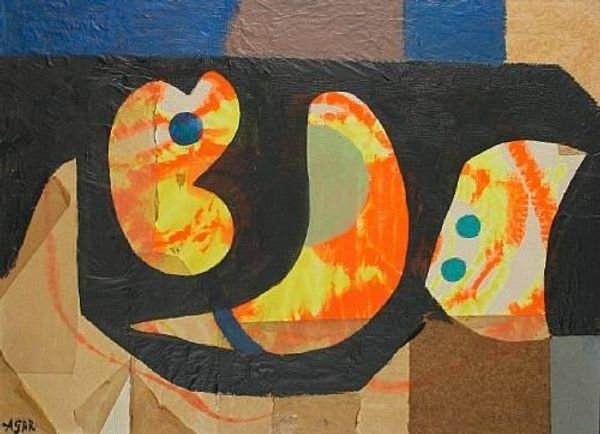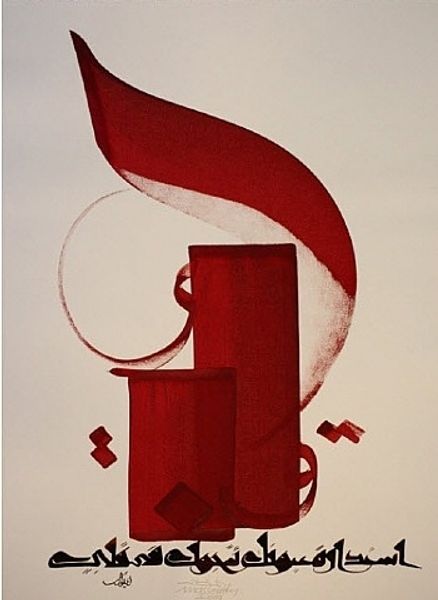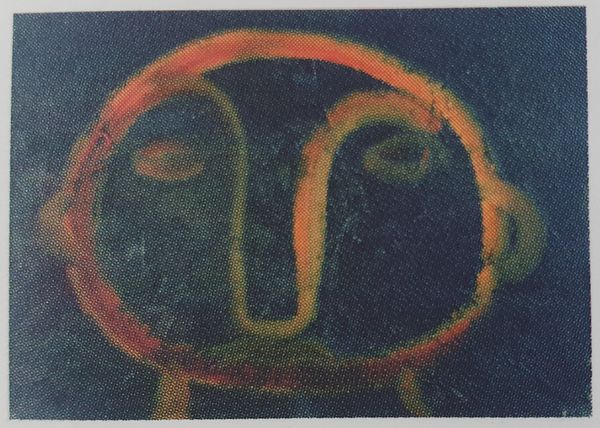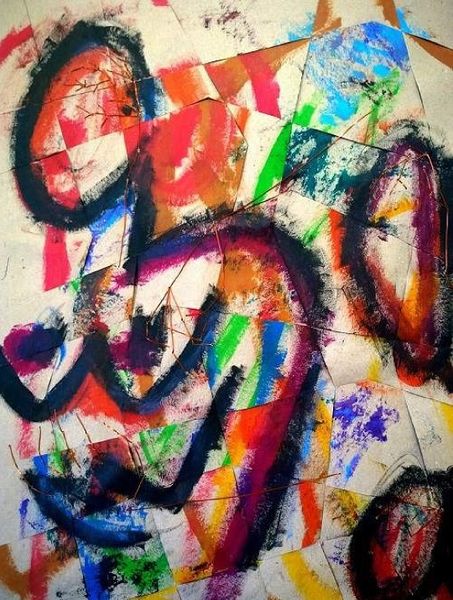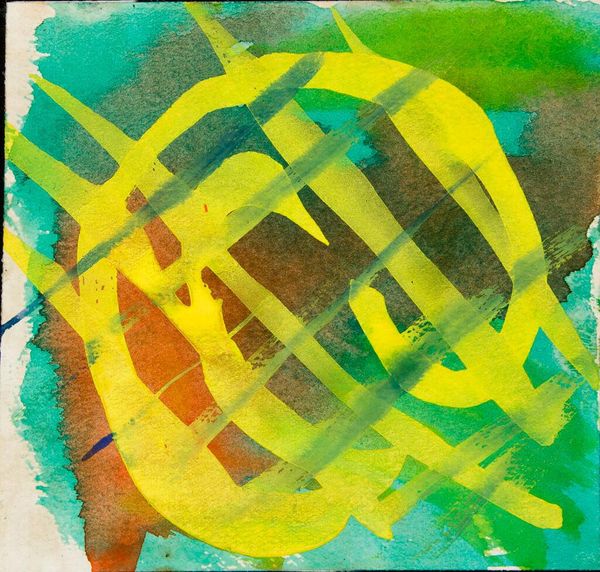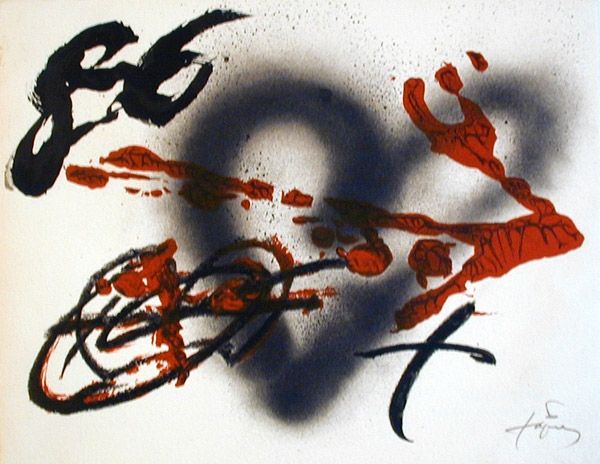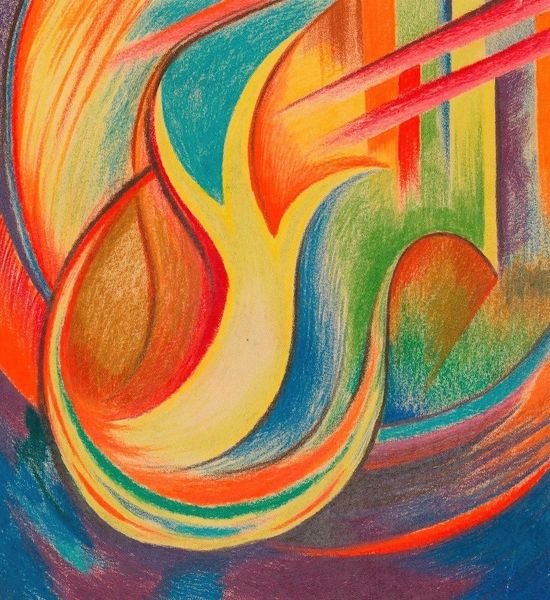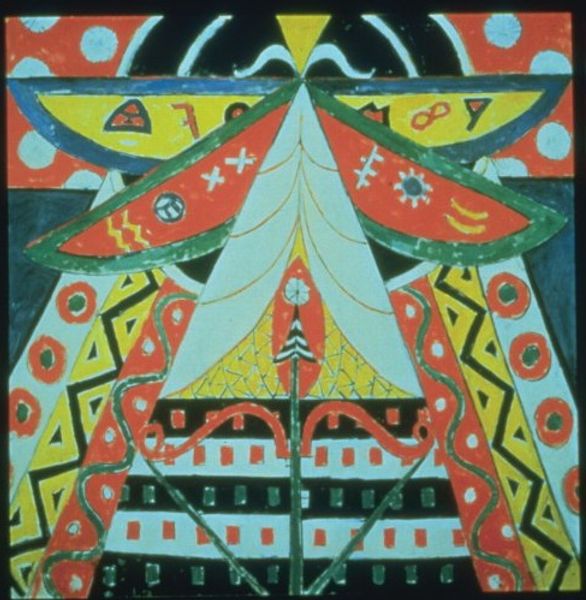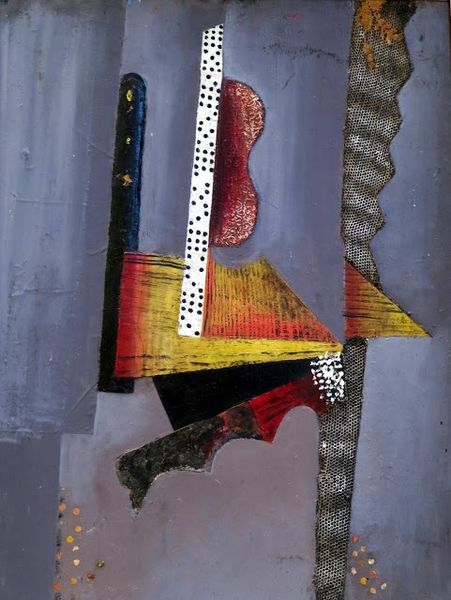
Copyright: Rodrigo Franzao,Fair Use
Editor: Rodrigo Franzao’s “Primitive Decomposition,” a mixed-media piece from 2013, strikes me with its vibrant energy. The geometric shapes layered on top of swirling brushstrokes feel both calculated and chaotic. How would you approach interpreting a work like this? Curator: From a materialist perspective, I'm immediately drawn to the artist's deliberate choice of combining acrylic paint with these hard-edged geometric forms. The tension created challenges the traditional hierarchy between the fluidity of Abstract Expressionism and the manufactured precision often seen in Pop Art. How do you think Franzao's process relates to contemporary modes of production and consumption? Editor: I see what you mean! The juxtaposition makes me think about mass production versus unique creation. The brushstrokes almost feel… nostalgic, maybe? They remind me of a handcrafted past contrasting with today's digital fabrication. Curator: Precisely! Now, consider the title, "Primitive Decomposition." How does the 'primitive' – possibly hinting at pre-industrial techniques – play against the idea of 'decomposition,' a breaking down or decay often associated with consumer culture’s planned obsolescence? The use of colour seems intentional. What can you make of it? Editor: That's a great question. The bright colors could represent the artificiality of modern products, but the slightly rough application might be a commentary on the fleeting nature of consumer goods and the environmental impact of overproduction. Curator: Exactly. The work seems to be interrogating the processes and materials we often take for granted, revealing underlying contradictions in contemporary society and the labor of art making itself. Editor: So, it’s less about individual expression and more about exploring these material and production dynamics. I hadn't thought about it that way initially! Curator: Seeing art through a materialist lens really encourages us to question not just what art *is* but also *how* and *why* it is made. Editor: This has definitely broadened my view. I appreciate how we considered the layers of meaning hidden in the materials and the creation process.
Comments
No comments
Be the first to comment and join the conversation on the ultimate creative platform.
